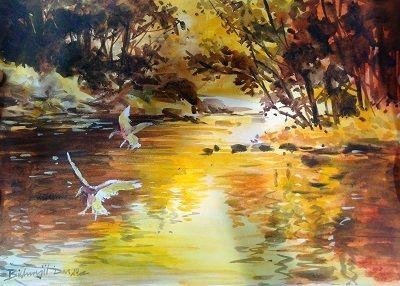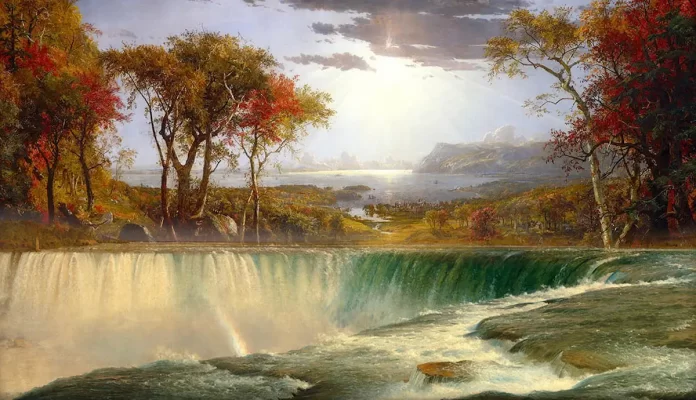The evolution of landscape painting is a fascinating journey that spans over centuries, encompassing various art movements and styles. One of the earliest schools of landscape painting was the Hudson River School, which emerged in the mid-19th century in America. This movement emphasized the natural beauty of the American wilderness and the sublime power of nature. Artists such as Thomas Cole and Frederic Edwin Church created panoramic landscapes with meticulous details and a romanticized interpretation of nature.
Landscape painting has been a popular art form for centuries. It is a form of art that captures the beauty of nature, and has been used to convey a range of emotions and ideas. From the Hudson River School to Modern Art, the evolution of landscape painting has been influenced by various factors. In this article, we will explore the history and evolution of landscape painting and how it has influenced the art world today.

Contents
The Hudson River School
The Hudson River School was a group of American painters who painted landscapes in the mid-19th century. They were known for their romantic and idealized depictions of the American wilderness. Their paintings often featured dramatic landscapes, including waterfalls, mountains, and forests. The Hudson River School was also known for their attention to detail, with many of their paintings featuring highly realistic depictions of nature.
One of the most famous artists of the Hudson River School was Thomas Cole. He is best known for his series of paintings, “The Course of Empire,” which depicted the rise and fall of civilizations. Another prominent artist of the Hudson River School was Frederic Edwin Church, who painted stunning landscapes of the American West.
Impressionism
In the late 19th century, a new art movement emerged in France known as Impressionism. Impressionism was characterized by loose brushstrokes and a focus on capturing the effects of light on nature. Impressionist paintings often depicted scenes of daily life, including landscapes.
One of the most famous Impressionist landscape painters was Claude Monet. His series of paintings, “Water Lilies,” captured the beauty of his garden in Giverny, France. Another prominent Impressionist landscape painter was Camille Pissarro, who landscape painting in a more realistic style than many of his fellow Impressionists.
Post-Impressionism
Post-Impressionism was a movement that emerged in the late 19th and early 20th centuries. It was characterized by a rejection of the limitations of Impressionism and a focus on individual expression. Post-Impressionist artists often used bold colors and exaggerated forms to convey emotion and meaning.
One of the most famous Post-Impressionist landscape painters was Vincent van Gogh. His painting, “Starry Night,” is one of the most recognizable paintings in the world. Another prominent Post-Impressionist landscape painter was Paul Cézanne, who used bold colors and geometric forms to capture the essence of nature.
Modern Art
In the 20th century, landscape painting continued to evolve. Modern artists continued to push the boundaries of traditional landscape painting, experimenting with new techniques and styles.
One of the most famous Modern landscape painters was Georgia O’Keeffe. Her paintings of the American Southwest captured the rugged beauty of the desert landscape. Another prominent Modern landscape painter was Mark Rothko, who used color to convey emotion and mood in his abstract landscape paintings.
Conclusion
The evolution of landscape painting has been influenced by various factors throughout history. From the romantic and idealized depictions of the Hudson River School to the bold colors and exaggerated forms of Post-Impressionism, landscape painting has continued to evolve and inspire artists throughout the world. Today, landscape painting continues to be a popular form of art, with artists continuing to push the boundaries and explore new techniques and styles.




[…] tree stumps can detract from the beauty of your landscape and pose obstacles to new planting or construction projects. Our stump grinding services make quick […]